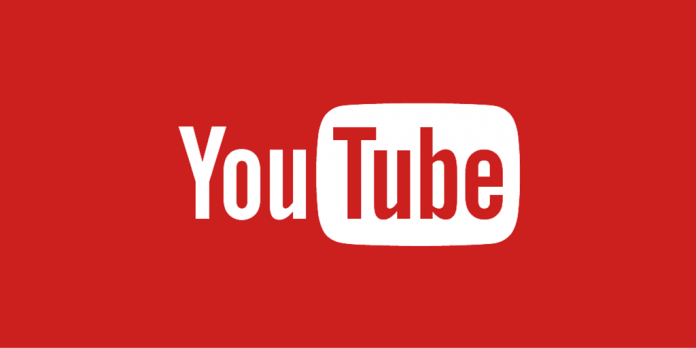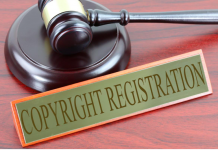This article is written by Sahaja, studying at NALSAR University of Law, Hyderabad. This article gives an insight into the guidelines and terms of agreement of Youtube. It also elaborates on the laws in the Indian context that need to be considered by the guidelines of YouTube.
Table of Contents
Introduction
YouTube, being one of the mainstream social media in the world at present, allows its users to share videos online, upload videos and watch videos online. It is the largest platform for video consumption. Anyone can create a channel on the platform and upload videos that are monetised based on the number of views a particular video receives. Similar to most social media platforms, YouTube has certain terms and agreements that need to be accepted by each user, to continue to use the platform. YouTube also needs to comply with certain laws and regulations of countries where it is used.
Important policies of YouTube that users need to know about
Users of Youtube need to abide by community guidelines and YouTube guidelines. Violating these guidelines and terms of service could lead to the termination of accounts or the deletion of videos. Being a social media platform used by millions of users, YouTube needs to abide by the laws of the country and must not violate fundamental rights like the right to freedom of speech and expression or the right to receive information.
Uploading content
According to community guidelines of YouTube with respect to uploading content, hate speech, predatory behaviour, graphic violence, malicious attacks, and content that promotes harmful or dangerous behaviour is not allowed. Any kind of content which would threaten an individual or organisation cannot be uploaded on YouTube. A strike system is followed to deal with malicious content. Any content that is prohibited will be removed and an email as a warning will be sent to the user. Every warning will be considered as a strike. Three strikes would lead to the termination of the account. Content that includes any kind of dangerous challenges, threatening pranks, hard drug use or creation, violent events, hacking etc. is not allowed on YouTube.
After the onset of the COVID-19 pandemic and the update of the policies of YouTube, any content that spreads misinformation on medical issues which is not in line with information of the World Health Organisation (WHO) or any other health authorities (local or national) is not allowed. The aforementioned system of strikes is used to deal with any content that spreads such misinformation. Explicit content meant to be sexually gratifying is not allowed on YouTube and in most cases will be age-restricted. Content that affects the physical and mental well-being of minors is not allowed on YouTube.
Copyright protection
Users of YouTube, according to the guidelines and the terms of the agreement, must only upload original video or videos that they have permission to upload. The ‘Copyright Management Suite’ of YouTube handles the copyrights of users. This system gives shareholders control of the copyrighted content who can decide what happens to videos that plagiarise their content.
Copyright tools used by Youtube
- Copyright takedown web form- if the copyrighted work of a user is seen to be reused a takedown request can be submitted which will then be examined and the plagiarised content would be taken down.
- Copyright match tool- this automatically identifies the use of copyrighted material and the owner of the copyright reviews and decides what action needs to be taken.
- Content verification programme- this is when copyright owners view content and give sufficient proof to YouTube takedown any unoriginal content.
Content ID- This system is to identify and manage their content easily whose IDs are stored in a database.
Securing private information
Google has access to a user’s activity on YouTube. A user’s search info and history on Youtube is used to refine suggestions and ads on the internet. YouTube uses encryption to keep data safe while transferring it. 2-step verification is provided to keep user accounts safe from hackers. The option to pause the history from being recorded or to delete history is provided. YouTube restricts access to personal information to Google employees, contractors, and agents who need that information in order to process it.
Licensing policy
The terms of service of YouTube provide a free license to all the users to use the software provided by YouTube. The license is only to use and enjoy the service given by YouTube. Users are not allowed to copy, modify or sell any part of the software. This will be against the licensing policy.
Granting rights
The user who uploads content on YouTube has ownership rights of the content. But by uploading content, the user grants certain rights to Youtube concerning the owner’s content. Some of these rights and licenses are described in the following few sections.
License to YouTube
When users upload content on Youtube, they provide YouTube a license to use the content. This content can only be used by YouTube to promote the service or the user of the video.
License to other users
By uploading content, users also provide a sub-licensable, worldwide license to other users to use the content concerning copyright rules. This service, however, cannot be used outside the software of YouTube.
Duration of license
The license impliedly given by a user remains valid till the content is either removed by the user or taken down by YouTube. Once deleted or removed, YouTube cannot display the removed or deleted content. The license also expires once the user deletes the account on YouTube.
Monetization rights
The videos uploaded by users on YouTube are by default monetized. The user grants the right to YouTube, to monetize content. This includes adding ads to the service or accepting a fee to access some part of the service like YouTube premium. This monetization right granted to YouTube by the user does not let the user be paid for the same.
Liability limitation and indemnity to YouTube
According to the guidelines of Youtube, it will not be liable for any kind of loss of profits, revenues, business caused by any glitch in the software, personal injury, virus, removal of content and unauthorised use of the software in any manner. As far as the applicable law allows, for any claims relating to the software, YouTube is liable to pay the amount of revenue that it has paid to the user in the past 12 months before the date of notice or USD 500, whichever is greater.
Mandatory compliance with various Indian laws while using YouTube
Although YouTube has specific rules and guidelines for its users, these guidelines and rules need to comply with the Indian laws. The guidelines need to comply with authorities like the Constitution of India, the Copyright Act, the Indian Penal Code and the Information Technology Act.
The Constitution of India, 1949
The Constitution of India guarantees certain rights to citizens and non-citizens. The guidelines of YouTube need to comply with the laws and must not infringe these rights. The guidelines need to comply with the right to freedom of speech as stated under Article 19.
Article 19(1)(a)
This Article grants the right to freedom of speech and expression to all citizens. This freedom of speech and expression also includes the freedom of the press and the freedom to receive information. This right guaranteed under Article 19(1)(a) is not absolute and certain restrictions can be imposed by referring to Article 19(2). Any such restrictions on the right to freedom of speech and expression will be imposed by laws made by the Legislature. YouTube, as a social media platform grants this right to freedom of speech and expression to the people as they can express this right via the content that can be uploaded, although this content can also be reviewed and can be removed or deleted.
Article 19(2)
A restriction on Article 19(1)(a) can be imposed only if this restriction falls under the expanse of Article 19(2). According to this Article, a restriction can be imposed “in the interests of the sovereignty and integrity of India, the security of the State, friendly relations with foreign States, public order, decency or morality or in relation to contempt of court, defamation or incitement to an offence”. This restriction must also be reasonable.
As mentioned above, YouTube’s guidelines do in fact comply with these provisions of the constitution and do not infringe the right to freedom of speech and expression.
The Copyright Act, 1957
This Act covers and governs the copyright law in India. Copyright is a bundle of rights given by the law to the creators of literary, dramatic, musical and artistic works and the producers of cinematograph films and sound recordings.
Section 52
As mentioned in the previous sections, YouTube uses copyright tools to deal with Copyright and copyrighted content. Section 52 of The Copyright Act mentions certain acts that are not an infringement of copyrights. According to this Section, fair dealing with anyone’s work for research, criticism, review or report on news and current affairs is not an infringement of Copyright. In addition to this, the reproduction of any work for educational purposes, watching it or publicising it for people to hear it is not an infringement of copyright. Section 52(A) specifies that using any audio or video file without specifying the source or giving credits is an infringement of the copyright. YouTube’s copyright mechanism seems to be flexible as the owner of the Copyright decides the fate of the content.
The Indian Penal Code, 1860
Section 153(A)
This section specifies that promoting enmity between different groups through any form of representation is an offence. This section also provides the punishment for the same. Similar to the guidelines of YouTube, any content that promotes violence or hatred is not allowed. Such content will be removed and is also punishable under the Indian Penal Code. Therefore, this guideline for upload falls in line with Section 153 (A).
Section 295
This section makes the act of destruction, damage or defilement of a place of worship which is done with the intent to hurt religious sentiments as an offence. Therefore, any content on social media which would hurt religious sentiments is an offence.
Section 125
Whoever wages war, attempts to wage war, or abets the waging of war against the Government of any Asiatic Power in alliance or at peace with the Government of India, shall be punished with life imprisonment, to which fine may be added, or with imprisonment of either description for a term which may be added or more.
The Information Technology Act, 2000
This is an Act that primarily deals with e-commerce and cybercrime. Section 66A is the most important section which deals with messaging and service and the information shared through social media platforms.
Section 66A
This section prescribes punishment for sending offensive messages. In the context of YouTube, any content that has offensive information could be removed and the owner of the video can be held liable under this section.
Any information that is blatantly offensive or has a threatening tone to it is punishable. Furthermore, under Section 66A, the term “grossly offensive” must be interpreted in such a way that it does not encompass merely generating offence. Therefore, any video content on YouTube which is offensive could be punished under Section 66A of the Information Technology, 2000.
Conclusion
Therefore, any guidelines or terms of agreement of YouTube must fall in line with the rights guaranteed under the Constitution of India and other Acts that concern YouTube. The law of India has an overriding effect on the terms and guidelines of YouTube. As mentioned above legal implications can follow prohibited actions or uploading prohibited content on Youtube.
References
- https://support.google.com/youtube/answer/2802268?hl=en&ref_topic=9282436
- https://support.google.com/youtube/answer/2801964?hl=en&ref_topic=9282436
- https://support.google.com/youtube/answer/2801999?hl=en&ref_topic=9282679
- https://support.google.com/youtube/answer/9245819?hl=en&ref_topic=9282364
- https://policies.google.com/privacy?hl=en#infosecurity
- http://www.wipo.int/wipolex/en/text.jsp?file_id=352024 (WIPO Lex)
- https://www.google.co.in/amp/s/vidooly.com/blog/freedom-of-speech-on-youtube-india/amp/
LawSikho has created a telegram group for exchanging legal knowledge, referrals, and various opportunities. You can click on this link and join:
 Serato DJ Crack 2025Serato DJ PRO Crack
Serato DJ Crack 2025Serato DJ PRO Crack











 Allow notifications
Allow notifications



